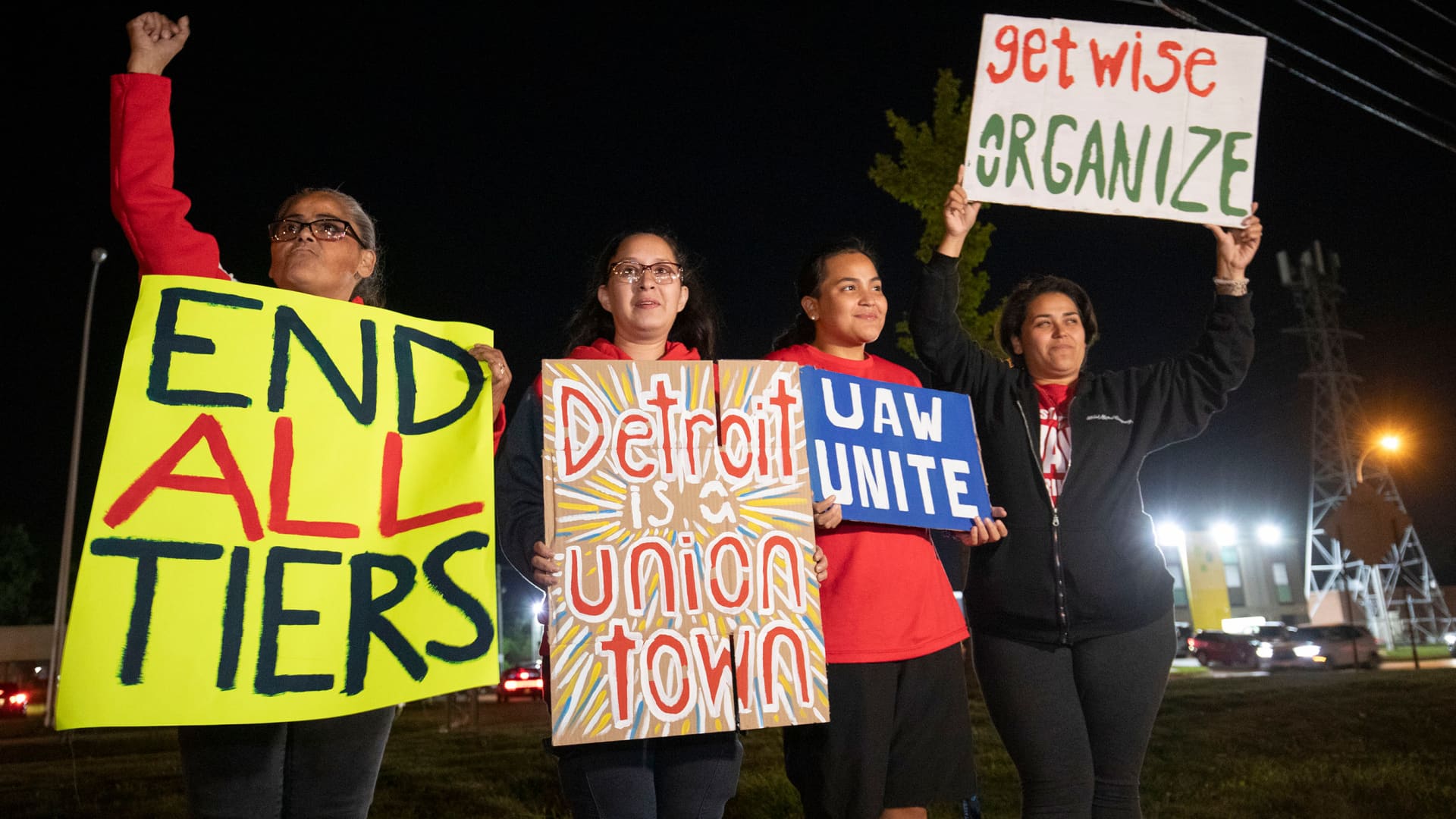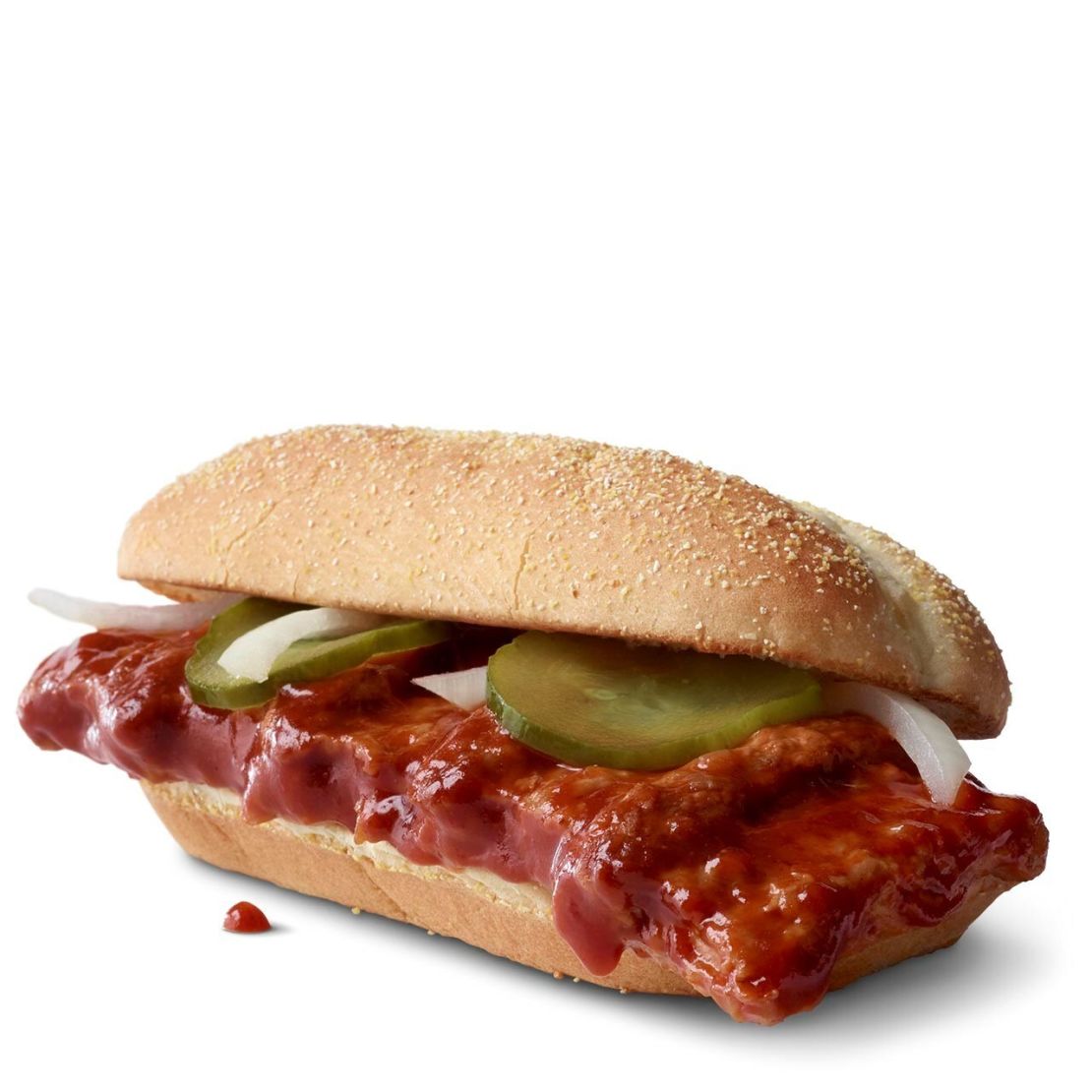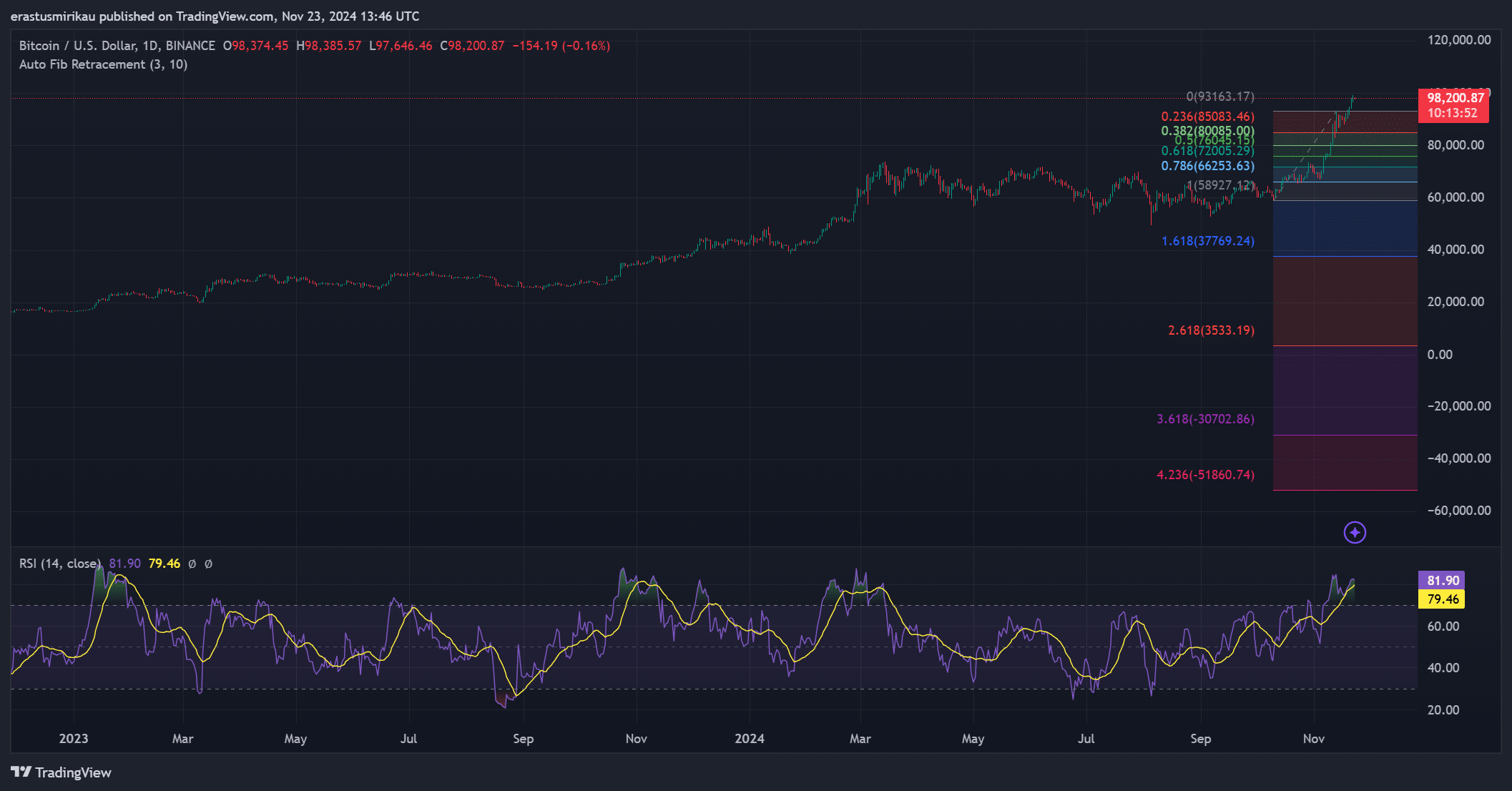Supporters of United Auto Workers (UAW) cheer as they go on strike at the Ford Michigan Assembly Plant in Wayne, Michigan on September 15, 2023.
Bill Pugliano | Getty Images News | Getty Images
The United Auto Workers labor union initiated targeted strikes against the three major automakers in Detroit early Friday morning. The strikes impacted three plants that produce popular models such as the Ford Bronco, Chevrolet Colorado, and Jeep Wrangler.
Historically, this is the first time that the UAW has simultaneously struck all three Detroit automakers. However, while the strikes commenced at the same time, the outcomes may vary significantly in the coming days, with Stellantis potentially facing more challenges in reaching a resolution compared to its rivals, Ford Motor and General Motors (GM).
Stellantis, formed in 2021 as a merger between Fiat Chrysler Automobiles and French automaker Peugeot, has a unique situation that its competitors do not. The company has surplus production capacity worldwide. To address this, Stellantis has announced plans to close or sell 18 of its US facilities, including factories and parts depots. Currently, the company operates approximately 35 factories and parts distribution centers in the US.
However, the union is unlikely to accept this plan without resistance.
It seems that Stellantis may have anticipated a prolonged strike given that it had more vehicles in inventory at US dealerships at the beginning of September compared to Ford or GM.
The auto industry assesses inventory in terms of “days’ supply,” which indicates the number of days the current inventory can sustain sales. Cox Automotive data reveals that all four of Stellantis’ US brands had more than 100 days’ supply of vehicles on dealer lots or in transit at the start of September. In contrast, GM’s Cadillac and Chevrolet brands had 46 and 51 days’ supply, respectively, while Ford’s brand had 77 days’ supply. The industry-wide average was 58 days’ supply at the beginning of the month. Typically, the Detroit automakers tend to have larger inventory due to the various configurations of their full-size pickups.
In contrast to Stellantis, the strike against Ford may be relatively short-lived. Based on comments from UAW President Shawn Fain and Ford executives, it appears that Ford is the closest to reaching a deal with the union. The UAW likely recognized this when it opted to strike only part of Ford’s Michigan Assembly Plant, specifically the areas where vehicles are painted and where final assembly takes place. On the other hand, all UAW-represented workers at GM’s assembly plant in Wentzville, Missouri, and Stellantis’ Jeep Wrangler factory in Toledo, Ohio, joined the strike last night.
General Motors may also avoid a prolonged strike. The details of GM’s final offer before the strike on Thursday indicated that its proposal was similar to Ford’s, including a 20% wage increase over the four-year contract, additional vacation days, two weeks of parental leave, and other concessions.
If Ford reaches an agreement with the UAW soon, GM is likely to follow suit by utilizing Ford’s deal as a template.
As of Friday morning, it seems Stellantis is prepared for a protracted battle.
“We are extremely disappointed by the UAW leadership’s refusal to engage in a responsible manner to reach a fair agreement in the best interest of our employees, their families and our customers,” the company stated in response to the walkouts. “We immediately put the Company in contingency mode and will take all the appropriate structural decisions to protect our North American operations and the Company.”
Following standard practice after a strike, negotiations between the UAW and the automakers will pause on Friday. Meetings are expected to resume over the weekend.












